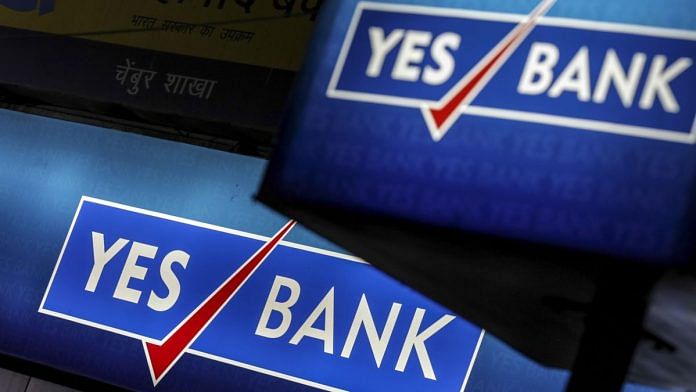New Delhi/Mumbai: India’s central bank finally lost patience with Yes Bank Ltd.’s efforts to raise new capital, seizing control of the beleaguered lender and placing strict limits on its operations while a rescue plan is devised.
The Reserve Bank of India capped withdrawals at RS 50,000 ($682) and ordered the bank not to issue new loans as it moved to protect the financial system from the woes of the country’s fourth-largest private lender. In a statement late on Thursday, the regulator said it was forced to step in after Yes Bank’s latest effort to raise new capital failed to materialize and as the lender “was facing regular outflow of liquidity.”
The move to rescue Yes Bank illustrates the widening damage from India’s shadow banking crisis, which has left the lender with a growing pile of bad loans. Indian authorities have been struggling to contain a crisis among shadow lenders that has choked credit to consumers and small businesses, slowing economic growth to an 11-year low.
“In the absence of a credible revival plan, and in public interest and the interest of the bank’s depositors, it had no alternative,” but to seize Yes Bank, the RBI said in the statement.
The takeover will help authorities implement a revival plan after numerous attempts by the lender to raise capital failed. Under a government-backed proposal State Bank of India, the nation’s largest lender, has been selected to lead a consortium that will inject new capital into Yes Bank, people familiar with the matter said earlier on Thursday.
While the RBI works on the rescue plan, there could be uncertainty about the liabilities of smaller Indian banks and shadow lenders, including their deposits and bonds, Manish Shukla, an analyst at Citigroup Inc., said in a report. “Fast clarity on the plan of reconstruction/amalgamation is critical from a system perspective,” Shukla wrote.
Yes Bank had been seeking new capital since last year, to bolster its ratios and quell questions about its stability due to its exposure to shadow banks entangled in a prolonged crunch in the local credit market. That erupted with a series of defaults at Infrastructure Leasing & Financial Services Ltd. in September 2018.
The seizure of Yes Bank is largest of the government moves to stem an erosion of confidence among investors due to the shadow bank crisis. The government took over IL&FS in 2018 in an effort to reassure creditors after the defaults. And last year, the RBI seized control of another struggling shadow lender, Dewan Housing Finance Corp., and said it will initiate bankruptcy proceedings.
RBI Governor Shaktikanta Das pledged this week in an interview with Bloomberg News that no major bank would be allowed to fail. He didn’t comment on the revival plan in an interview to BloombergQuint earlier on Thursday.
State Bank of India has been authorized to select other members of the consortium, the people said earlier Thursday, asking not to be identified as the information isn’t public. In a subsequent filing to the stock exchange, State Bank of India said its board met on Thursday and “an in-principle approval has been given by the board to explore investment opportunity” in Yes Bank.
Yes Bank’s total exposure to shadow lenders and developers — both caught up in a funding crunch since late 2018 — was 11.5% as of September, filings show. A Credit Suisse Group AG note in April marked Yes Bank out as the lender with the largest proportion of outstanding loans to large stressed borrowers, including Anil Ambani group companies, Essel Group, Dewan Housing and IL&FS.
Last month, Yes Bank said it has received non-binding offers from foreign investors including JC Flowers & Co., Tilden Capital, Oak Hill Advisors and Silver Point Capital. But the RBI made clear those talks had fizzled.
“These investors did hold discussions with senior officials of the Reserve Bank but for various reasons eventually did not infuse any capital,” the RBI said in its statement.
And it wasn’t the first time the bank had announced names of potential investors. In November, the bank’s board disclosed several other names before rejecting most of the offers.
Moody’s Investors Service cut the bank’s credit ratings in December and in January said its “standalone viability is getting increasingly challenged by its slowness in raising new capital.”- Bloomberg
Also read: Modi govt approves rescue plan for Yes Bank, SBI-led consortium to inject capital



